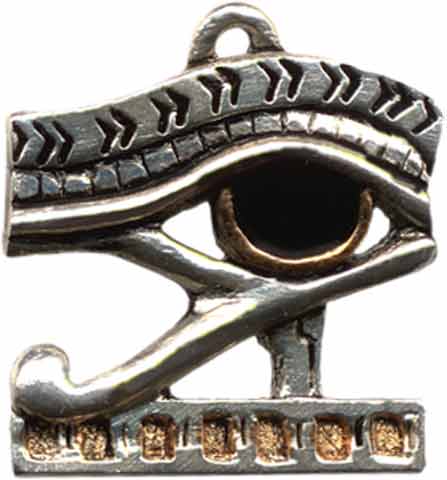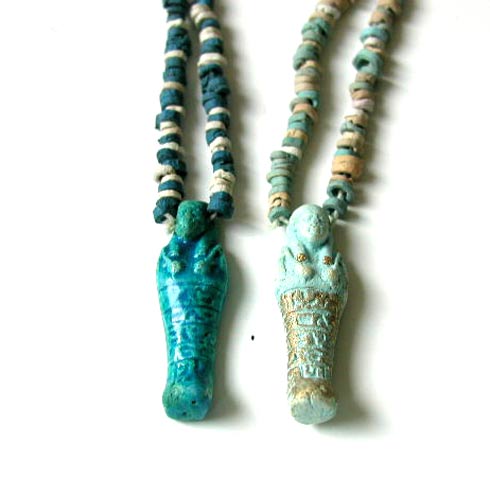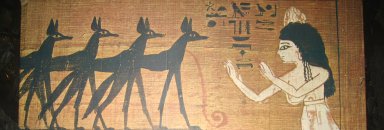
Ancient Egyptian Amulets and Ushabti
In order to protect the soul (akh) on its dangerous journey through the Netherworld, various powerful Egyptian amulets were placed with the mummy while it was being bandaged. Each amulet generally had an clear position on the mummy and a designed purpose. While they were being placed in position on the body, the embalmers and funerary priests would recite magical invocations of the Ritual of Embalmment and anoint the body to endow it with power.

Picture: Eye Of Horus Pendant
These spells are known colloquially as The Book of The Dead. Copies of this book were often placed in the tomb with the mummy. One of the most common and also most important Egyptian amulets included the Wadjet eye, also known as the Eye of Horus. This symbol is found in tombs and artwork as far back as the Old Kingdom. It represents the healed left eye of Horus which had been gouged out in his battle with his evil uncle Seth. It was said to restore health and bestow new vitality.
Another widespread example of Egyptian amulets is the Djed pillar. This symbol was placed over the throat of the mummy and symbolized strength and power and was thought to help the akh (soul) to be worthy of a place in the real of the dead. Another powerful symbol was a statue of Anubis - the God of the Afterlife.
Egyptian Ushabti
Probably one of the most familiar Egyptian antiquity is that of the ushabti or shabti. These little figures are generally crafted in shape of a mummy. With hieroglyphic inscriptions on their fronts. They can be made of pottery, faience, wood or stone. Where the akh finally made it to its eternal existence with Osiris in the Field of Reeds, it feared that it would be required to do manual work forever. This was especially abhorrent and to avoid this, special magical spells were devised which when written on the ushabti ensured that the figure would take the place of the deceased and perform any tasks necessary. The word shabti comes from the Egyptian usheb, meaning "to respond".

Picture: A modern depiction of Ushabti in a form of jewellery.
An interesting reference to this figure can be found in the Book of the Dead. "O, ushabti, give to me, if I am summoned or if I am called upon to do any work which has to be done in the realm of the dead; if indeed any obstacles are placed for you as for a man with his tasks, you shall respond for me on every occasion - of fertilizing the fields, or irrigating the banks or of carrying sand away from the east bank to the west bank, 'Here I am,' you shall say."


intro | home | egyptian mummies
shop | mummification process | mummy facts
mummy links|egyptian mummies exhibition
| egyptian mummy pictures | find us